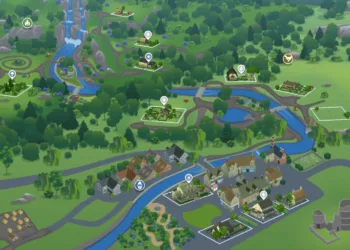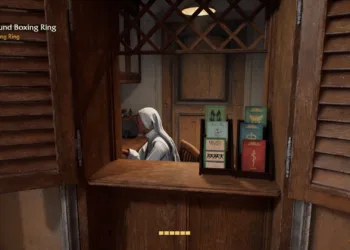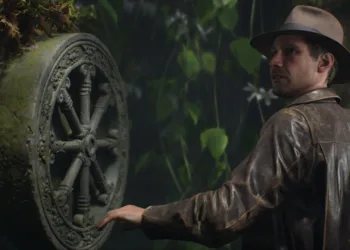Understanding the Prince of Persia Series
The Prince of Persia franchise is a cherished series developed by Ubisoft that eventually paved the way for the Assassin’s Creed series. While both series feature thrilling parkour mechanics and dynamic combat, Prince of Persia is centered around a more defined setting, as opposed to the open-world exploration characteristic of Assassin’s Creed. However, the timeline of the Prince of Persia games can be a bit perplexing, as it includes original titles, spin-offs, and portable versions on devices like the Nintendo DS.
A Complex Timeline
Throughout its history, Prince of Persia has traversed through three distinct historical eras, each spotlighting different protagonists. Navigating the series’ chronology can be tricky, particularly with various remakes and adaptations adding to the complexity. After completing its initial trilogy, Ubisoft rejuvenated the franchise, marking the beginning of a new chapter.
Most remakes and ports don’t significantly affect the overarching timeline, allowing players to focus on the primary narratives without getting lost in the details.
The Games’ Historical Context
Updated in October 2024, this overview of Prince of Persia reveals its popularity and the significant revival the series has enjoyed in recent years. It’s essential to understand when each game takes place within the franchise.
Is There a Single Timeline?
In short, no. Although all the games are set in an imagined version of Persia, they cover vastly different periods, particularly when looking at the various sub-series.
While each game is placed in different contexts—ranging from ancient to medieval times—they don’t follow a strict chronological order. Given that time manipulation is a central theme within the games, this ambiguity is further pronounced.
| Game | Release Date | Historical Setting |
|---|---|---|
| Prince Of Persia (2008) | 2008 | Ancient Persia |
| The Fallen King | 2008 | |
| The Lost Crown | 2024 | |
| The Rogue Prince of Persia | 2024 | |
| The Sands Of Time | 2003 | Medieval Persia |
| The Forgotten Sands | 2010 | |
| Battles Of Prince Of Persia | 2005 | |
| Warrior Within | 2004 | |
| The Two Thrones | 2005 | |
| Prince Of Persia (1989) | 1989 | |
| Prince Of Persia 2: The Shadow And The Flame | 1993 | |
| Prince Of Persia 3D | 1999 |
The majority of the installments take place during the medieval period, but apart from the Sands of Time trilogy, they exist as largely standalone stories. This independence allows players to delve into individual games without needing to follow a convoluted narrative.
The Ubisoft Era
In 2001, Ubisoft acquired the rights to the Prince of Persia series from Jordan Mechner, becoming the main developer for future titles. The majority of their releases, even those with different names, maintain connections to or are remakes of the Sands of Time series.
With the launch of The Lost Crown, Ubisoft has explored fresh narratives within the franchise. Notably, the 2008 reboot provided a new interpretation of the series, spotlighting the versatility of its storytelling style.
Highlights of the Series
-
Prince of Persia (2008): This soft reboot takes place in an independent timeline from the Sands of Time games, focusing on a nameless adventurer known as the Prince. He encounters a princess while trying to save his donkey and must combat Ahriman, the god of darkness.
-
The Fallen King: This game carries the narrative forward, featuring the Prince and Elika as they fight against Ahriman’s forces and teamwork to restore balance.
-
The Sands of Time: This original Ubisoft title marked a revolutionary shift in gaming with its time manipulation mechanics. The Prince must harness the Dagger of Time to correct the chaotic disruptions caused by greed.
-
The Forgotten Sands: Set between Sands of Time and Warrior Within, this game is about the Prince attempting to contain a resurrected mythological army.
-
The Two Thrones: This installment resolves plot threads from previous games while presenting new and advanced gameplay mechanics.
-
Prince of Persia: The Lost Crown: This latest entry introduces a new protagonist, Sargon, marking a significant departure by not centering around the original Prince.
- The Rogue Prince of Persia: Featuring gameplay similar to Dead Cells, this spin-off delivers a fresh, side-scrolling experience.
The Original Games
The earlier titles, while differing from the modern renditions, form a vital part of the franchise’s legacy. The first Prince of Persia released in 1989 was a 2D platformer where players navigated perilous environments to rescue the Sultan’s daughter from a tyrant.
The sequel, Prince of Persia 2: The Shadow And The Flame, continued the story just days after the first game, emphasizing combat and gameplay. However, Prince of Persia 3D ventured off with an unrelated narrative, set in a 3D environment and exploring different gameplay mechanics.
Conclusion
The Prince of Persia series has played a significant role in shaping video game history. Despite its complex timeline and varied gameplay mechanics, the franchise continues to captivate players with its rich storytelling and engaging gameplay. Whether revisiting the original classics or diving into the latest releases, there’s always a unique experience waiting to be discovered in this iconic series.










